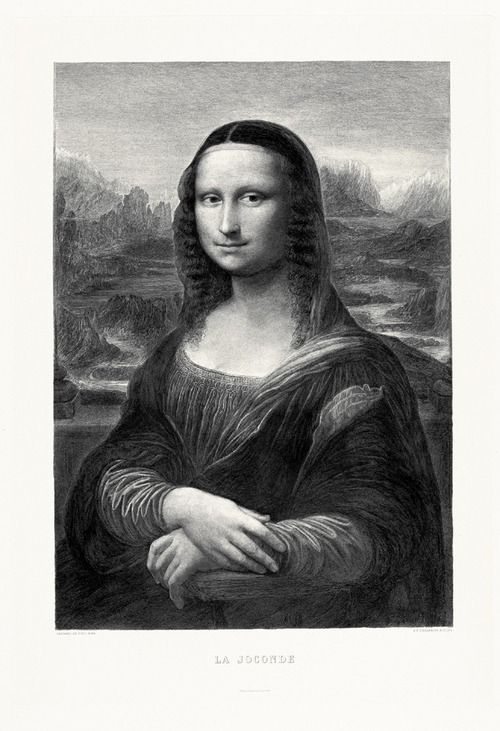Engraving the World
dal 13/6/2006 al 29/7/2006
Segnalato da
University Museum and Art Gallery
13/6/2006
Engraving the World
University Museum and Art Gallery - UMAG, Hong Kong
Prints from the chalcography collection of the Louvre Museum. A selection of over one hundred etchings dating from the seventeenth to nineteenth centuries, tracing the development of the art of copper engraving.

The Chalcography of the Louvre Museum
As part of Le French May, The Louvre Museum, the Re'union des Muse'es
Nationaux, the Consulate General of France in Hong Kong and Macau, and the
University Museum and Art Gallery of the University of Hong Kong are pleased
to present an exhibition of prints from the chalcography collection of the
Louvre Museum. Chalcography refers to the technique of engraving on copper,
endorsed in the seventeenth century under the patronage of the Sun King,
Louis XIV (r.1668-1715), as well as to the repository in which the copper
plates are collected.
This exhibition presents for the first time in Hong Kong a selection of over
one hundred etchings dating from the seventeenth to nineteenth centuries,
tracing the development of the art of copper engraving. The beginnings of
the chalcography collection date to the 1660s under Louis XIV when he
established a royal workshop for the production of etchings and the
collection known as the Cabinet du Roi (King's Cabinet) in 1663, which
includes depictions of the royal residences, monuments, records of
historical occasions, botanical and natural history subjects as well as
etchings made after masterpieces in the royal collections.
On view will be prints from the Cabinet du Roi depicting the palace at Versailles, and
events such as the Carousel of 1662 held to celebrate the birth of King
Louis XIV's son, among others. Other notable prints date to the nineteenth
century when the practice of creating prints from masterpieces held in the
Louvre collections was popular. These include La Joconde better known as
the Mona Lisa, by Leonardo da Vinci, as well as subjects by Nicolas Poussin,
Jean-August Dominique Ingres and Raphael. Prints by several contemporary
artists such as internationally-renowned Louise Bourgeois have also been
included to illustrate the continuing practice of printmaking today.
The highlight of the exhibition will be the two 'Coronelli globes', named
after the cartographer and cosmographer Vincenzo Coronelli (1650-1718),
which are reduced versions of the famous 'Marly Globes' presented to Louis
XIV by Cardinal d’Estre'es in the seventeenth century showing the celestial
and terrestrial worlds as they were at the time of Louis XIV's birth.
Another highlight is the map of Paris known as the Turgot map, named after
the head of the municipality of Paris, Michel Etienne Turgot who
commissioned a new map of the city in 1734. The map shows the city in
unprecedented detail as if viewed from above by a bird. Its production
entailed one of the most comprehensive surveys of Paris of its time.
Louis XIV had long had a fascination with Asia but did not decide to send
the first French mission to China until after 1684 when he received a visit
from the Jesuit priest Father Philippe Couplet who had spent 25 years in
China, and came bearing gifts of woodblock-printed Chinese books. This
first mission arrived in Beijing in February 1688 at the court of the Qing
dynasty emperor Kangxi (r.1662-1722), marking the beginnings of intellectual
and cultural exchanges between these two great nations and the birth of
sinology in France.
The mission included books on a range of diverse subjects, and a volume of
prints from the Cabinet du Roi. Kangxi, like Louis XIV, was a man of vision
with a keen interest in the arts and sciences. Thus began a fruitful
exchange between China and France. Many Chinese books were subsequently
acquired and translated for the Bibliothe'que du Roi (the royal library),
forming the best collection of its kind in Europe.
The Louvre’s chalcography collection numbers over 13,000 copper plates and
commands the same attention as the Museum's other collections. Since 1895,
the Re'union des Muse'es Nationaux has managed the making and marketing of
prints pulled from the original copperplates. Although the advent of
photography in the nineteenth century changed forever the future of
printmaking, the fine tradition of copper engraving continues to be
practiced by artists today.
The opening reception will take place on Wednesday 14 June at 6:00 pm. The
guests-of-honour will be Dr Patrick Ho, Secretary for Home Affairs, HKSAR
Government; Mr Jean-Pierre The'bault, Consul General of France in Hong Kong
and Macau; Mr Henri Loyrette, Director, Louvre Museum; Mr Pascal Torres
Giardiola, Curator of the Louvre Chalcography Collection and Professor
Lap-Chee Tsui, Vice-Chancellor, The University of Hong Kong.
Mr Pascal Torres Giardiola will be available to meet the press at the Museum
on Wednesday 14 June from 5:00 pm onwards. Mr Torres will also be
presenting a talk entitled, 'A Political and Ideological Approach towards
Chalcography', on Thursday 15 June at 6:00 pm at the Museum. (In French
with English translation). Dr Greg Thomas, Associate professor of the Dept,
of Fine Arts, HKU will also present a guided tour of the exhibition on
Saturday 17 June at 3:00 pm. (In English). These events are free and open
to the public. An illustrated catalogue of the exhibition is also
available.
University Museum and Art Gallery
The University of Hong Kong - 94 Bonham Road, Pokfulam - Hong Kong
Opening hours: Monday to Saturday 9:30 am to 6:00 pm and
Sunday 1:30 to 5:30 pm. Closed on University and public holidays



